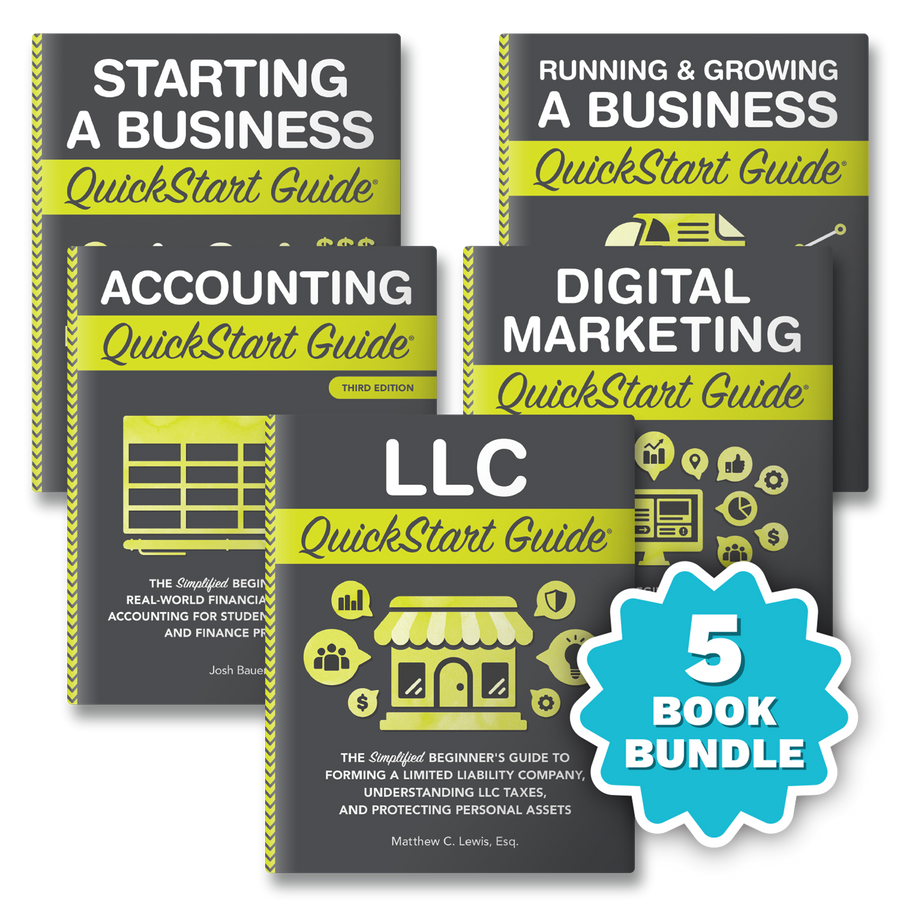Digital Ads: Read This Before Starting Your First Campaign
Advertising is an essential part of any business, helping you reach new customers and grow your company. However, if you don’t plan your ad campaign correctly, you may not see the desired results. So where should you get started, and how can you ensure your budget won’t be blown on bad choices? That’s where this guide comes in – we’ve decoded the murky world of digital advertising and found a few concrete steps any business owner can take that will give them the best chance at reaching their target audience with ads that increase profitability in nearly any niche.
Digital Advertising Basics
Like the scientific method, there’s a process for advertising that, when followed, produces results in a replicable way.
Start with a Reason.
Before starting an ad campaign, have a reason for why you’re advertising. Are you trying to increase sales? Reach a new audience? Increase brand awareness? Once you have a reason for launching an ad campaign, it will guide your creative decisions. Create a Budget. Once your reason is clear, you’ll need to create a budget for your ad campaign. This will help you determine how much money you have available and what specific ads or marketing campaigns are feasible. Define Your Goals. Now that you’ve got a budget, it’s time to set specific goals for the campaign. These goals should be based on your reason for advertising and should aim to achieve specific results (such as increasing sales or reaching new audiences). Your goals will be measurable metrics that show whether your ad campaign is on the right track. When you’re starting an ad campaign, it’s typically considered a best practice to start with only one or two goals, so that it’s easy to monitor progress. Here are some goals you might consider: Number of clicks per hundred views The dollar amount of sales Number of sales Number of customers that become repeat buyers Create Your Ad Campaign. Once you have your goals and budget, it’s time to get creative! You can start by brainstorming ideas with your team or researching ad campaigns that have worked in the past. Once you have a few ideas, start developing them into actual ads and get them live. Track Results. Once your ads are live, it’s crucial to track their results. This can be done through click data, conversion data (i.e., how many sales were made as a result of the ad), and customer feedback (i.e., how positive or negative the ad was perceived to be). By tracking these results regularly, you can adjust your advertising strategy as needed and ensure that your campaigns achieve their goals. How to Choose the Right Type of Ad for Your Business There are many types of advertising, each with its own strengths and weaknesses. To choose the right kind of ad for your business, you need to understand your target market and how they look for products or services like yours. You can also use online tools to research the effectiveness of various ad formats. A few digital ad options to consider: Social Media Ads. Social media ads are the most cost-effective way to reach your target market. They can be placed on Facebook, Twitter, and other social media sites. However, they have limited reach to specific age groups and may not be as effective as other types of ads. The best social media ads are often part of a multi-pronged social media approach that includes organic marketing through posts and engagement and paid collaborations with influencers and bloggers. Search Engine Ads. Search engines like Google and Bing offer search-related ads as a cost-effective way to reach a broad audience with your advertising message. But you must be prepared to spend a lot of money on them, because search ads are incredibly competitive. Email Marketing. Email marketing is a cost-effective way to send out targeted emails to your target market. However, it can be challenging to measure the success of email campaigns, and it can take a long time for them to reach their full potential. Also, having your email marked as spam too often may result in your emails being permanently banned by the service provider. Display Advertising (Banner or Pop-Up Ads). Display advertising is an affordable way to reach a large audience with your message. The downside is that many web browsers use ad-blocking software that significantly limits your reach while still eating up your ad budget. Sponsored Posts. Sponsored posts are like long-form ads that companies pay a blogger or social media influencer to write and promote. They’re especially effective for highly targeted niches served by bloggers or influencers. However, sponsored posts can be expensive to produce and are typically only promoted for a set period of time. Also, you need to vet your collaborators well to ensure that their claimed level of influence is accurate, because paid bots can manipulate follower counts and engagement numbers. Video Ads. Video ads are a great way to reach a wide audience and quickly capture their attention. But they can be expensive to produce and cannot be changed as easily as image- or text-based ads. QUESTIONS YOU NEED TO ASK TO HELP YOU DECIDE WHICH AD IS BEST FOR YOUR BUSINESS What are our key target demographics, and how do they use the internet? Your target demographic will, of course, spend time across a variety of websites, but to be successful with advertising, you need to know how they spend their time on each individual platform. For example, Instagram is popular with young people and businesses that sell lifestyle products or services that appeal to millennials. However, Instagram users rarely search the platform for information about professional services, financial planning, or products, so even if your ideal age group is millennials, that doesn’t mean your ad will get as much traction as it would on a platform like LinkedIn or Twitter. A robust customer avatar can be really helpful here. How much are we willing to spend on advertising? Advertising costs vary depending on the platform, ad format, and target audience. In general, though, you’ll want to budget at least $100 per day if you’re an average-sized business, no matter the type of ad or platform. Are our customers worldwide, or do we serve a specific area? If you only serve a particular area, you can focus on platforms that best work for local customers, such as travel-based sites, search engine ads, or local bloggers. If your customers are worldwide, you will need to consider global advertising and focus on platforms that can best deliver worldwide reach. What is our timeline for this campaign? A successful advertising campaign should have set start and end dates to maximize its return on investment (ROI). But when it comes to digital ads, you’ll need to consider whether or not your ad campaign needs to be long-term or short and base your choice of advertising platform on that. For example, Facebook allows for shorter campaigns with set expiration dates, whereas Google AdWords allows for longer-term campaigns that can be tweaked and amended as needed. Marketing timelines also change the type of platform that will work. Ads on search engines or social media platforms like Pinterest are typically best used for seasonal or evergreen campaigns. In contrast, just-in-time ads do well on platforms like Instagram and TikTok, where users are used to seeing fresh content regularly. Can we adequately support our ads? Since your ads will typically run 24 hours a day, you’ll need to have a system in place that can handle customer questions and comments quickly. Also, the increase in traffic on your website means a higher strain on bandwidth, so you’ll need to ensure your website’s server can handle the uptick without slowing down or shutting off your site entirely. Setting a Budget for Your Ad Campaigns There are a few key factors to consider when creating a budget: the target audience, the cost of ads, and the time it will take to achieve results. Once you understand these factors, you can begin setting a specific budget for each campaign. TARGET AUDIENCE The first step in setting a budget is understanding who your target audience is. Ads should be tailored specifically to your target audience to elicit an emotional response. This will be difficult if you do not know much about your target market, but using online research tools can help you get started. Once you have identified your target market, find out how much they are spending on products or services in your niche and divide that amount by the number of people you plan to reach daily with your ad campaign. This will give you an idea of how much you need to spend on ads to reach your target audience. COST OF ADS The cost of ads also plays a significant role in setting a budget for your campaigns. Ads can range from very affordable to extremely expensive, so make sure you target the right audience and spend the right amount. It can be helpful to compare prices between different advertising platforms before settling on a specific one. TIME IT TAKES TO REALIZE RESULTS Another critical factor when setting a budget for your advertising campaigns is understanding how long it will take to achieve results. Certain ad platforms work better than others for certain campaigns, so select the right platform for the type of campaign you are planning. It can also be helpful to compare different ad campaigns in regard to how long they take to achieve results. How Much Money Is Enough? One of the most common questions asked in business is, “How much money should I spend on advertising?” This question is challenging to answer because there is no absolute number. But there are some general principles that can help. First, you need to consider what type of advertising will work best for your business. For example, you might want to invest in text-based ads if your target market is primarily readers, or video ads if your target market is consumers who prefer to learn via visual aids and tutorials. Second, you need to calculate how many people will see your ad. This involves estimating the number of people who are likely to see your ad based on your target market and your available budget. Finally, you need to consider the cost of running your ad campaign. This includes the costs of producing the ad, such as visuals and copy, the fees for running the ad itself, and any other “soft” costs such as the salary of a staffer who will manage the campaign. In general, aim to spend between 2% and 5% of your annual revenue on advertising. This number will depend on various factors, including your budget and target market. If you’re feeling overwhelmed, speak with an experienced advertising consultant to get an accurate estimate of how much money you should spend on advertising. Troubleshooting: What to Do If Your Ads Aren’t Working If you are having trouble with your advertising, there are a few things to check: Are the ads being delivered to the right people? Your targeted reach may be too large to be practical or too small for your ad to be noticed. Consider adjusting your demographics slightly or using a more targeted ad platform. Are you spending enough money? Your budget may need adjusting if you’re not reaching enough people. If you’re not able to increase your budget, consider decreasing your timeline so that more money is allocated to showing ads every day of your campaign. Are the ads being placed in the right places? Make sure you target your audience accurately and use the right keywords to find the right spots on the web. Is your website working correctly? It seems like a no-brainer, but ensuring that your website (or wherever you’re sending your ad traffic) is functioning correctly is critical for success in advertising. A well-oiled website can help you target your audience and generate leads and sales. But if your website isn’t up to par, your advertising efforts will be for naught. Here are some tips to ensure that it’s running smoothly: Make sure the pages on your site load quickly. This includes everything from the home page to the individual product pages. Images, videos, and other large files can slow down a website. Have adequate server space and bandwidth to support your site’s traffic levels. Check the display properties of all the images and videos on your website. Make sure they are sized correctly for viewing on all device types and that the images and videos are properly compressed for faster loading. Does your site work on mobile screens? If not, you may need to revise your website design to make it mobile-friendly. Is the ad copy compelling and does it instruct customers on what the next step should be? Effective ad copy will be memorable and engaging, convincing consumers to take action (such as clicking through to a website or purchasing a product), and tailored to match the specific demographics of the target market. Your ad should also give viewers instructions on what to do next. Even a simple button that says “click here” ensures that your potential customer knows where to go for more information or to buy a product. Are you tracking results correctly? Your website should have tracking metrics that link to your ads, such as a pixel or tracking code. That way, you can track which ads are working and which ones need to be tweaked. If you don’t have this setup, you’ll never know how well your ads perform. Conclusion Advertising planning and budgeting are essential in any business, but it can be daunting to start from scratch. Take your time and go slowly until you gain experience, and you’ll be on your way to creating successful ads that drive traffic, increase profitability, and grow your business quickly.



